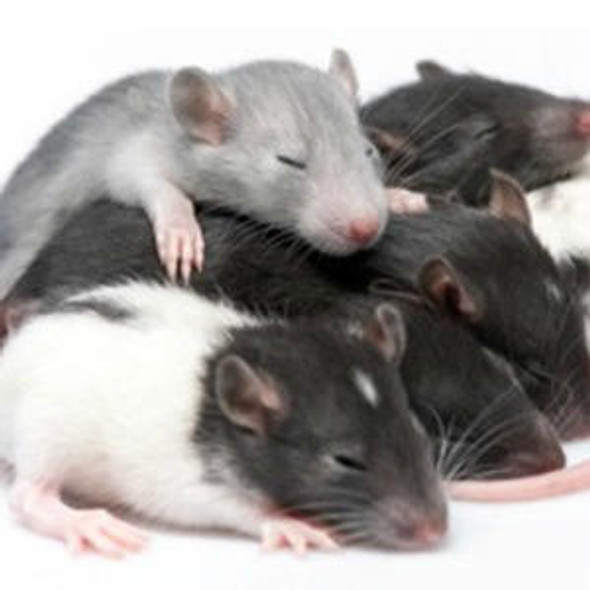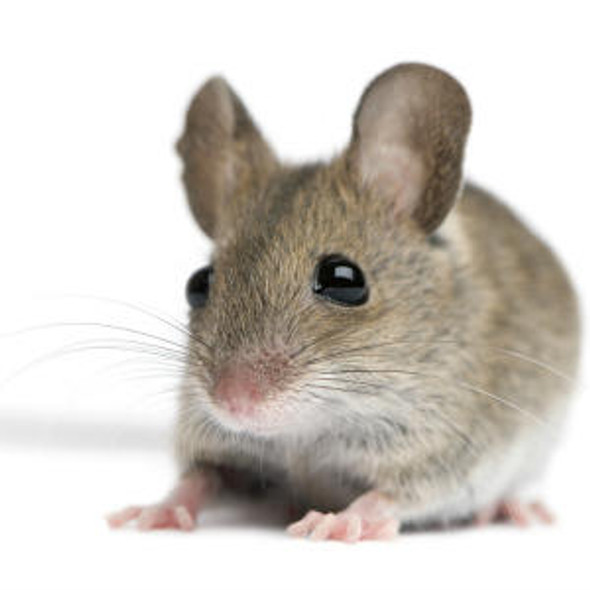Human CAV1 / Caveolin-1 protein ELISA Kit
- SKU:
- HUFI00561
- Product Type:
- ELISA Kit
- Size:
- 96 Assays
- Uniprot:
- Q03135
- Sensitivity:
- 0.188ng/ml
- Range:
- 0.313-20ng/ml
- ELISA Type:
- Sandwich ELISA, Double Antibody
- Synonyms:
- Cav-1, Caveolin-1, CAV1, BSCL3, CGL3, VIP21, CAV, caveolae protein, 22kD, cell growth-inhibiting protein 32,
- Reactivity:
- Human
Description
| Product Name: | Human CAV1 / Caveolin-1 protein ELISA Kit |
| Product Code: | HUFI00561 |
| Size: | 96 Assays |
| Alias: | Cav-1, Caveolin-1, CAV1, BSCL3, CGL3, VIP21, CAV, caveolae protein, 22kD, cell growth-inhibiting protein 32 |
| Detection method: | Sandwich ELISA, Double Antibody |
| Application: | This immunoassay kit allows for the in vitro quantitative determination of Human CAV1 concentrations in serum plasma and other biological fluids. |
| Sensitivity: | 0.188ng/ml |
| Range: | 0.313-20ng/ml |
| Storage: | 4°C for 6 months |
| Note: | For Research Use Only |
| Recovery: | Matrices listed below were spiked with certain level of Human CAV1 and the recovery rates were calculated by comparing the measured value to the expected amount of Human CAV1 in samples. | ||||||||||||||||
| |||||||||||||||||
| Linearity: | The linearity of the kit was assayed by testing samples spiked with appropriate concentration of Human CAV1 and their serial dilutions. The results were demonstrated by the percentage of calculated concentration to the expected. | ||||||||||||||||
| |||||||||||||||||
| CV(%): | Intra-Assay: CV<8% Inter-Assay: CV<10% |
| Component | Quantity | Storage |
| ELISA Microplate (Dismountable) | 8×12 strips | 4°C for 6 months |
| Lyophilized Standard | 2 | 4°C/-20°C |
| Sample/Standard Dilution Buffer | 20ml | 4°C |
| Biotin-labeled Antibody(Concentrated) | 120ul | 4°C (Protect from light) |
| Antibody Dilution Buffer | 10ml | 4°C |
| HRP-Streptavidin Conjugate(SABC) | 120ul | 4°C (Protect from light) |
| SABC Dilution Buffer | 10ml | 4°C |
| TMB Substrate | 10ml | 4°C (Protect from light) |
| Stop Solution | 10ml | 4°C |
| Wash Buffer(25X) | 30ml | 4°C |
| Plate Sealer | 5 | - |
Other materials and equipment required:
- Microplate reader with 450 nm wavelength filter
- Multichannel Pipette, Pipette, microcentrifuge tubes and disposable pipette tips
- Incubator
- Deionized or distilled water
- Absorbent paper
- Buffer resevoir
| Uniprot | Q03135 |
| UniProt Protein Function: | Caveolin-1: May act as a scaffolding protein within caveolar membranes. Interacts directly with G-protein alpha subunits and can functionally regulate their activity. Involved in the costimulatory signal essential for T-cell receptor (TCR)- mediated T-cell activation. Its binding to DPP4 induces T-cell proliferation and NF-kappa-B activation in a T-cell receptor/CD3- dependent manner. Recruits CTNNB1 to caveolar membranes and may regulate CTNNB1-mediated signaling through the Wnt pathway. Homooligomer. Interacts with GLIPR2, NOSTRIN, SNAP25 and syntaxin. Interacts with rotavirus A NSP4. Interacts (via the N- terminus) with DPP4; the interaction is direct. Interacts with CTNNB1, CDH1 and JUP. Interacts with BMX and BTK. Expressed in muscle and lung, less so in liver, brain and kidney. Belongs to the caveolin family. 2 isoforms of the human protein are produced by alternative initiation. |
| UniProt Protein Details: | Protein type:Motility/polarity/chemotaxis; Adaptor/scaffold; Nuclear receptor co-regulator Chromosomal Location of Human Ortholog: 7q31.1 Cellular Component: protein complex; focal adhesion; integral to plasma membrane; basolateral plasma membrane; endoplasmic reticulum; lipid particle; cell cortex; caveola; acrosomal membrane; cilium; lipid raft; Golgi membrane; early endosome membrane; perinuclear region of cytoplasm; apical plasma membrane; plasma membrane; intracellular; cytoplasmic vesicle; endosome Molecular Function:identical protein binding; protein binding; protease activator activity; enzyme binding; cholesterol binding; patched binding; protein complex scaffold; structural molecule activity; nitric-oxide synthase binding; protein kinase binding; receptor binding Biological Process: mammary gland involution; viral reproduction; negative regulation of epithelial cell differentiation; negative regulation of tyrosine phosphorylation of Stat5 protein; nitric oxide homeostasis; negative regulation of BMP signaling pathway; calcium ion homeostasis; protein localization; sequestering of lipid; regulation of the force of heart contraction by chemical signal; regulation of fatty acid metabolic process; negative regulation of protein binding; inactivation of MAPK activity; regulation of smooth muscle contraction; maintenance of cellular protein localization; skeletal muscle development; cytosolic calcium ion homeostasis; negative regulation of nitric-oxide synthase activity; cellular response to starvation; membrane depolarization; cholesterol homeostasis; response to estrogen stimulus; T cell costimulation; negative regulation of endothelial cell proliferation; negative regulation of protein ubiquitination; regulation of nitric-oxide synthase activity; response to calcium ion; response to progesterone stimulus; negative regulation of JAK-STAT cascade; leukocyte migration; lactation; vesicle organization and biogenesis; negative regulation of peptidyl-serine phosphorylation; negative regulation of pinocytosis; negative regulation of transcription from RNA polymerase II promoter; nitric oxide metabolic process; mammary gland development; calcium ion transport; negative regulation of cytokine and chemokine mediated signaling pathway; angiogenesis; vasculogenesis; protein homooligomerization; vasoconstriction; cholesterol transport; negative regulation of MAPKKK cascade; negative regulation of nitric oxide biosynthetic process; MAPKKK cascade; positive regulation of metalloenzyme activity; positive regulation of peptidyl-serine phosphorylation; regulation of peptidase activity; cellular calcium ion homeostasis; triacylglycerol metabolic process; regulation of blood coagulation; response to hypoxia; positive regulation of vasoconstriction; blood coagulation; vascular endothelial growth factor receptor signaling pathway Disease: Lipodystrophy, Congenital Generalized, Type 3; Partial Lipodystrophy, Congenital Cataracts, And Neurodegeneration Syndrome; Pulmonary Hypertension, Primary, 3 |
| NCBI Summary: | The scaffolding protein encoded by this gene is the main component of the caveolae plasma membranes found in most cell types. The protein links integrin subunits to the tyrosine kinase FYN, an initiating step in coupling integrins to the Ras-ERK pathway and promoting cell cycle progression. The gene is a tumor suppressor gene candidate and a negative regulator of the Ras-p42/44 mitogen-activated kinase cascade. Caveolin 1 and caveolin 2 are located next to each other on chromosome 7 and express colocalizing proteins that form a stable hetero-oligomeric complex. Mutations in this gene have been associated with Berardinelli-Seip congenital lipodystrophy. Alternatively spliced transcripts encode alpha and beta isoforms of caveolin 1.[provided by RefSeq, Mar 2010] |
| UniProt Code: | Q03135 |
| NCBI GenInfo Identifier: | 13637934 |
| NCBI Gene ID: | 857 |
| NCBI Accession: | Q03135.4 |
| UniProt Secondary Accession: | Q03135,Q9UGP1, Q9UNG1, Q9UQH6, |
| UniProt Related Accession: | Q03135 |
| Molecular Weight: | 178 |
| NCBI Full Name: | Caveolin-1 |
| NCBI Synonym Full Names: | caveolin 1, caveolae protein, 22kDa |
| NCBI Official Symbol: | CAV1 |
| NCBI Official Synonym Symbols: | CGL3; PPH3; BSCL3; LCCNS; VIP21; MSTP085 |
| NCBI Protein Information: | caveolin-1; cell growth-inhibiting protein 32 |
| UniProt Protein Name: | Caveolin-1 |
| Protein Family: | Caveolin |
| UniProt Gene Name: | CAV1 |
| UniProt Entry Name: | CAV1_HUMAN |
*Note: Protocols are specific to each batch/lot. For the correct instructions please follow the protocol included in your kit.
Before adding to wells, equilibrate the SABC working solution and TMB substrate for at least 30 min at 37°C. When diluting samples and reagents, they must be mixed completely and evenly. It is recommended to plot a standard curve for each test.
| Step | Protocol |
| 1. | Set standard, test sample and control (zero) wells on the pre-coated plate respectively, and then, record their positions. It is recommended to measure each standard and sample in duplicate. Wash plate 2 times before adding standard, sample and control (zero) wells! |
| 2. | Aliquot 0.1ml standard solutions into the standard wells. |
| 3. | Add 0.1 ml of Sample / Standard dilution buffer into the control (zero) well. |
| 4. | Add 0.1 ml of properly diluted sample ( Human serum, plasma, tissue homogenates and other biological fluids.) into test sample wells. |
| 5. | Seal the plate with a cover and incubate at 37 °C for 90 min. |
| 6. | Remove the cover and discard the plate content, clap the plate on the absorbent filter papers or other absorbent material. Do NOT let the wells completely dry at any time. Wash plate X2. |
| 7. | Add 0.1 ml of Biotin- detection antibody working solution into the above wells (standard, test sample & zero wells). Add the solution at the bottom of each well without touching the side wall. |
| 8. | Seal the plate with a cover and incubate at 37°C for 60 min. |
| 9. | Remove the cover, and wash plate 3 times with Wash buffer. Let wash buffer rest in wells for 1 min between each wash. |
| 10. | Add 0.1 ml of SABC working solution into each well, cover the plate and incubate at 37°C for 30 min. |
| 11. | Remove the cover and wash plate 5 times with Wash buffer, and each time let the wash buffer stay in the wells for 1-2 min. |
| 12. | Add 90 µl of TMB substrate into each well, cover the plate and incubate at 37°C in dark within 10-20 min. (Note: This incubation time is for reference use only, the optimal time should be determined by end user.) And the shades of blue can be seen in the first 3-4 wells (with most concentrated standard solutions), the other wells show no obvious color. |
| 13. | Add 50 µl of Stop solution into each well and mix thoroughly. The color changes into yellow immediately. |
| 14. | Read the O.D. absorbance at 450 nm in a microplate reader immediately after adding the stop solution. |
When carrying out an ELISA assay it is important to prepare your samples in order to achieve the best possible results. Below we have a list of procedures for the preparation of samples for different sample types.
| Sample Type | Protocol |
| Serum | If using serum separator tubes, allow samples to clot for 30 minutes at room temperature. Centrifuge for 10 minutes at 1,000x g. Collect the serum fraction and assay promptly or aliquot and store the samples at -80°C. Avoid multiple freeze-thaw cycles. If serum separator tubes are not being used, allow samples to clot overnight at 2-8°C. Centrifuge for 10 minutes at 1,000x g. Remove serum and assay promptly or aliquot and store the samples at -80°C. Avoid multiple freeze-thaw cycles. |
| Plasma | Collect plasma using EDTA or heparin as an anticoagulant. Centrifuge samples at 4°C for 15 mins at 1000 × g within 30 mins of collection. Collect the plasma fraction and assay promptly or aliquot and store the samples at -80°C. Avoid multiple freeze-thaw cycles. Note: Over haemolysed samples are not suitable for use with this kit. |
| Urine & Cerebrospinal Fluid | Collect the urine (mid-stream) in a sterile container, centrifuge for 20 mins at 2000-3000 rpm. Remove supernatant and assay immediately. If any precipitation is detected, repeat the centrifugation step. A similar protocol can be used for cerebrospinal fluid. |
| Cell culture supernatant | Collect the cell culture media by pipette, followed by centrifugation at 4°C for 20 mins at 1500 rpm. Collect the clear supernatant and assay immediately. |
| Cell lysates | Solubilize cells in lysis buffer and allow to sit on ice for 30 minutes. Centrifuge tubes at 14,000 x g for 5 minutes to remove insoluble material. Aliquot the supernatant into a new tube and discard the remaining whole cell extract. Quantify total protein concentration using a total protein assay. Assay immediately or aliquot and store at ≤ -20 °C. |
| Tissue homogenates | The preparation of tissue homogenates will vary depending upon tissue type. Rinse tissue with 1X PBS to remove excess blood & homogenize in 20ml of 1X PBS (including protease inhibitors) and store overnight at ≤ -20°C. Two freeze-thaw cycles are required to break the cell membranes. To further disrupt the cell membranes you can sonicate the samples. Centrifuge homogenates for 5 mins at 5000xg. Remove the supernatant and assay immediately or aliquot and store at -20°C or -80°C. |
| Tissue lysates | Rinse tissue with PBS, cut into 1-2 mm pieces, and homogenize with a tissue homogenizer in PBS. Add an equal volume of RIPA buffer containing protease inhibitors and lyse tissues at room temperature for 30 minutes with gentle agitation. Centrifuge to remove debris. Quantify total protein concentration using a total protein assay. Assay immediately or aliquot and store at ≤ -20 °C. |
| Breast Milk | Collect milk samples and centrifuge at 10,000 x g for 60 min at 4°C. Aliquot the supernatant and assay. For long term use, store samples at -80°C. Minimize freeze/thaw cycles. |










